|
Hermes 450
|
|
| |
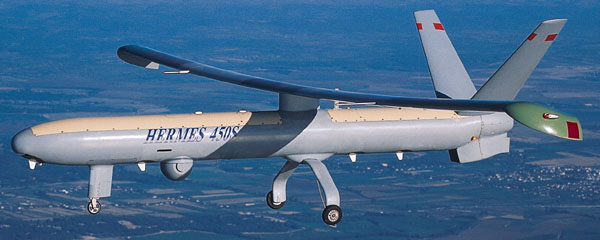
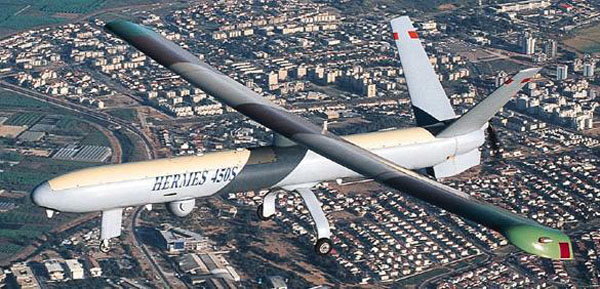
|
| |
| |
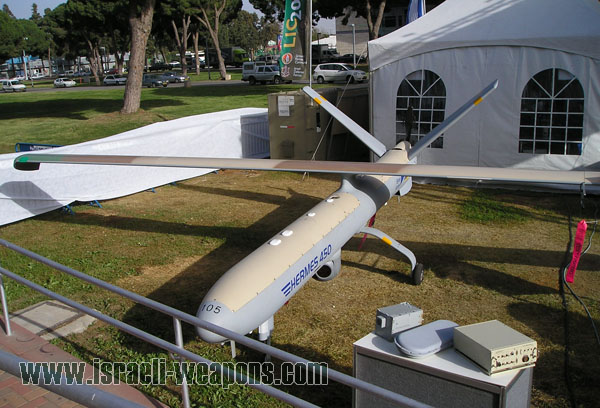
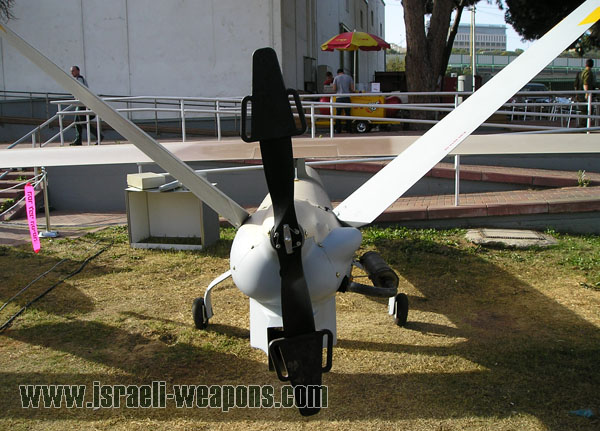
|
| |
| |
|
| |
| |
| |
The Hermes 450 is a medium size UAV supplying real time intelligence data to ground forces. The UAV (length 6.1 m, wingspan 10.5 m and weight 450 kg), was designed for tactical long endurance missions.
With multi-payload capability (150 kg, 300 L, 1.6 kVA) the Hermes 450 is effective for ISTAR, SIGINT, communication relays and other missions for Division to Corps levels.
It is powered by a 52 hp rotary UEL engine that provides a maximum speed of 95 KTAS@SL, altitude over 18 kft, endurance over 20 hours.
The Hermes 450 features fully redundant avionics, fully autonomous flight, LOS and/or satellite communication data link with a fully composite structure that is highly mobile and easily deployed. |
|
|
|
| |
June 9, 2003
Elbit Systems Ltd. received a $47 million contract from the Israeli Ministry of Defense for the supply of Unmanned Airborne Vehicle (UAV) systems to Israel Defense Forces (IDF). The contract is to be performed over a three-year period.
|
| |
| |
200 Squadron - First UAV Squadron, Palmachim AB |
| |
|
| |
The 200 squadron was established in 1971 to operate unmanned reconnaissance vehicles, the first of which were used in the Yom Kippur War of 1973. The first aircraft of this squadron were remotely piloted vehicles (RPVs), which were replaced with upgraded, programmed autopilot aircraft known as unmanned aerial vehicles (UAVs) in 1981. The first UAV was the IAI Scout (Zahavan), which was used in the 1982 Lebanon War. In 1992, the squadron began operating the IAI Searcher (Hugla), a new version of which was produced in 1998 and named the IAI Searcher Mk. II (Kochav Lavan). In 2005-2006 IAI Heron and Heron TP (Shoval and Eitan) added to the the squadron.
Another UAV squadron was established in 2003, 166 squadron. This caused the old IAI Scout (Zahavan) UAVs to begin phase out from active duty within the IAF.
|
| |
| |
166 Squadron - UAV Squadron, Palmachim AB |
| |
|
| |
The 166 squadron was established in 2003 to operate Elbit/Silver Arrow Hermes 450 (Zik) UAVs. |
| |
| |
Air Defense Corps - North |
| |
In Yom Kippur War 1973, Israel suffered severe losses to Arab air defences. Surface to Air Missiles (SAM) had forced Israeli aircraft to operate at very low level where they were susceptible to Anti-Aircraft Artillery. The Shrike air-to-ground anti-radar missile launched from Phantoms was not altogether successful in clashes with Syrian forces between October 1973 and April 1974. Another option was to launch the Shrike missile with an Israeli-developed rocket booster from a turretless M51 Sherman chassis. The role of the Kilshon (Hebrew for Trident) was to take up a position near the battlefield and launch the Shrike (which had a range of sixteen kilometres in this surface-to-surface guise) after Israeli aircraft had teased the Arab air defence into switching on their search and targeting radars.
This system been replaced by Keres in early 80's, The Kere's first experience in battle was in the Lebanon War (1982), it had been operated for about 20 years by the air defense corps 153rd battalion, initially from Palmachim AFB and later on from Ramat David AFB until it was finally disbanded in late 90's.
HARPY (shion) is lethal UAV designed to detect, attack and destroy radar emitters. In late 90's Harpy replaced Keres that operated for about 20 years by the air defense corps' 153rd battalion from Ramat David AFB. |
| |
| |
| |
| |
| |
| |
|
Reload this page if you have problem to see this map.
|
| |
| |
| |
| |
|
| |
Performance: |
| |
|
|
|
|
|
|
|
|
|
|
Stall speed |
42 kts |
Max. rate of climb |
900 fpm |
|
| |
Technical Data: |
| |
|
|
|
|
|
|
|
105 kg |
|
|
|
|
|
|
Total engine power |
52 hp @ 8,000 RPM |
|
| |
|
| |
Military support missions:
Non military missions:
-
Drug interdiction
-
Coastal patrol
-
Environmental supervision
-
Border patrol
-
Nuclear accident appraisal
-
Forest and wildlife inspection
-
Meteorological and atmospheric research
Main Features:
-
A high wing, V tail optimal aerodynamic configuration
-
Light composite structure
-
UELAR-80-1010 rotary engine with a pusher propeller
-
Redundant flight computer avionics and power supply
-
Fully autonomous flight with in-flight redirection
-
Optional DGPS automatic take-off and landing
|
| |
| |
Hermes 450 in U.S. Service |
| |
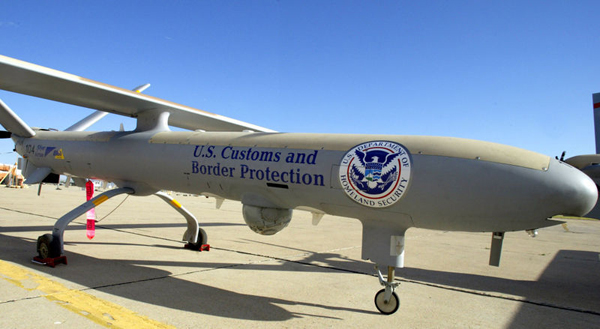
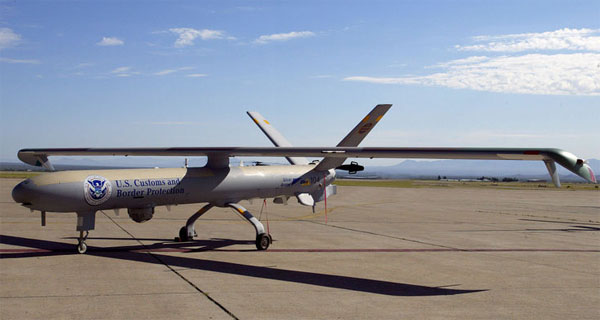
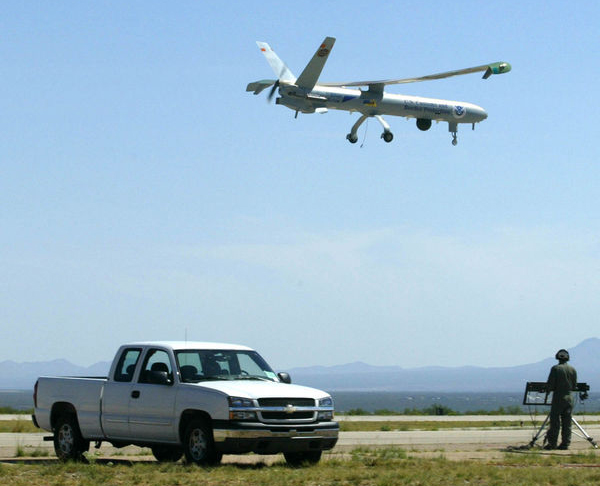 |
| |
| |
July 14, 2003
Elbit's wholly-owned subsidiary EFW Inc., Fort Worth, Texas, has been awarded a contract to operate its Hermes 450 Unmanned Air Vehicle (UAV) system in support of the office of the Secretary of Defense (OSD), Director of Test and Evaluation, Joint UAV Joint Test and Evaluation (JUAV-JT&E), at NAS Fallon, Nevada.
The contract was awarded by SENTEL Corporation and the flight services will be performed jointly by Elbit Systems' subsidiaries EFW and Silver Arrow, at several U.S. locations including NAS Fallon.
The contract was awarded after rigorous validation flights demonstrating the Hermes 450’s capabilities and versatility. The Hermes 450 will provide a reliable turnkey system for seamless integration of UAVs with other operational military elements. The effort will encompass operations with forces from all four U.S. services. As of early July 2003, the system had already conducted more than a dozen highly successful missions in support of U.S. Navy carrier air wing training and JUAV test and evaluation exercises. |
|
| |
| |
June 30, 2004
Elbit's wholly-owned subsidiary, EFW Inc., based in
Fort Worth, Texas, is providing the Department of Homeland Security,
Customs and Border Protection (CBP) its Hermes 450 Unmanned Air
Vehicles (UAV) along Arizona's southern border as part of the Arizona
Border Control Initiative (ABCI).
Under the CBP lease contract, EFW and Elbit Systems provide UAV's,
ground control stations, operational crews and support personnel for
UAV flight support of border patrol operations. This initial pilot program,
which is focused on the Arizona border with Mexico, may be extended
into next year and may be expanded by CBP to include the northern US
border with Canada.
The ABCI initiative is intented to provide improved surveillance along
the Mexican border for various homeland security applications, including
illegal immigration and drug smuggling. The UAVs will supplement
manned aircraft and ground sensors with flight operation scheduled for
the summer of 2004. The Hermes 450 Unmanned Air Vehicles are
equipped with electro-optic sensors and communications payloads
providing day and night imagery to Customs and Border Protection
agents. The UAVs permit greater coverage and quicker response in the
rugged, desolate areas of the southwest border and are the first
operational use of UAVs for border patrol in the USA. |
| |
| |
Already a success
As of July 20, 2004, there have been 42 apprehensions directly attributable to UAV surveillance. While every case may not be as dramatic, the following example, reported by The Arizona Republic, clearly demonstrates the UAV’s ability to track in remote areas, strategic use of resources, and enhanced officer safety.
On July 24, 2004, a Border Patrol UAV assisted in a border arrest. A Fort Huachuca police officer was chasing a suspect who was driving in a stolen truck. The suspect turned down a dirt road, running the officer off the road. The officer called the Border Patrol for back-up. The Border Patrol's Hermes 450 UAV spotted the pickup truck on a remote dirt road and tracked it. The truck had stopped and people were jumping out and running into the brush. A Border Patrol helicopter had to drop two agents into the area because traveling on land was too difficult. The smuggling suspect came out of the brush and started throwing “softball sized” rocks at the helicopter’s main rotor blades. The suspect was apprehended and arrested and will face "destruction of a federal aircraft," "felony alien smuggling" and "re-entry of an aggravated felon" charges. LK |
| |
| |
Hermes 450 in Singapore Air Force Service |
| |
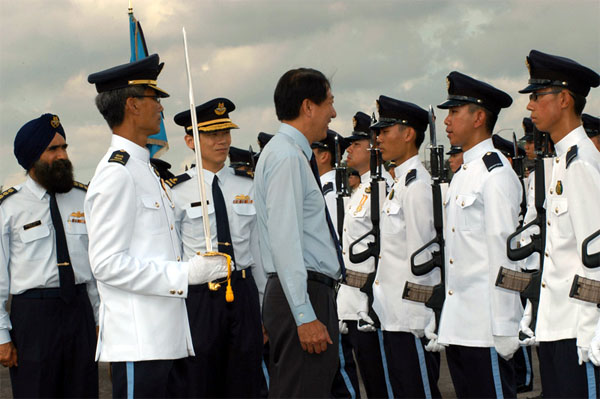 Minister for Defence Teo Chee Hean inspecting the parade at the UAV Command Inauguration.
Minister for Defence Teo Chee Hean inspecting the parade at the UAV Command Inauguration. |
| |
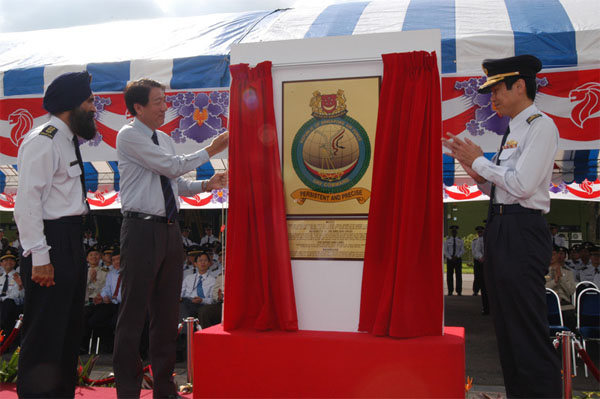 Minister for Defence unveiling the UAV Command Logo, accompanied by COL Sarbjit Singh, COMD UAV Command (left) and Chief of Air Force BG Ng Chee Khern (right).
Minister for Defence unveiling the UAV Command Logo, accompanied by COL Sarbjit Singh, COMD UAV Command (left) and Chief of Air Force BG Ng Chee Khern (right). |
| |
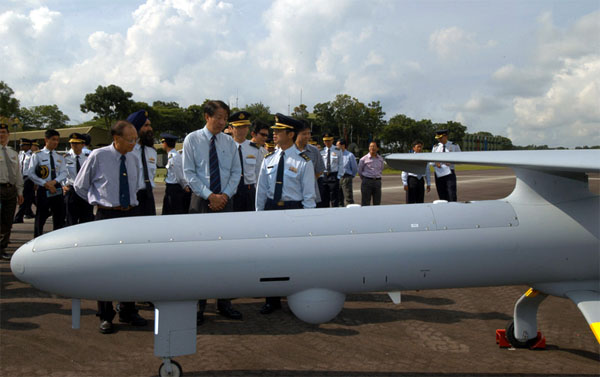
Minister for Defence Teo Chee Hean receiving a briefing on the H-450 from CO 116 Sqn, LTC Tan Yik (extreme right). |
| |
| |
| |
Minister for Defence Teo Chee Hean officiated at a parade to inaugurate the Republic of Singapore Air Force (RSAF) Unmanned Aerial Vehicle (UAV) Command, at Murai Camp this morning. Following the inauguration of Air Defence and Operations Command (ADOC) in January 2007, the UAV Command is the second of five RSAF operational commands to be inaugurated as part of a functional re-organisation in the 3rd Generation Singapore Armed Forces (SAF).
In the new RSAF structure, the UAV Command will provide tactical support for operations conducted by the SAF. It will also develop capabilities and personnel skills in unmanned systems operations. The UAV Command is also the first operational Command in the RSAF's 3rd Generation transformation that is manned by personnel from all the three Services and includes personnel from the SAF's Joint Staff.
At the inauguration parade, Mr Teo also announced a new unmanned system, the Hermes 450 (H-450). The H-450 UAV is equipped with improved avionics and communication systems that will enhance the SAF's battlefield surveillance capability. The H-450 will complement the current Searcher 2 UAV that is operated by the SAF. The establishment of UAV Command reflects the growing importance of unmanned capabilities in the operations of the 3rd Generation SAF. |
| |
| |
Hermes 450 in Georgian Service |
| |
|
| |
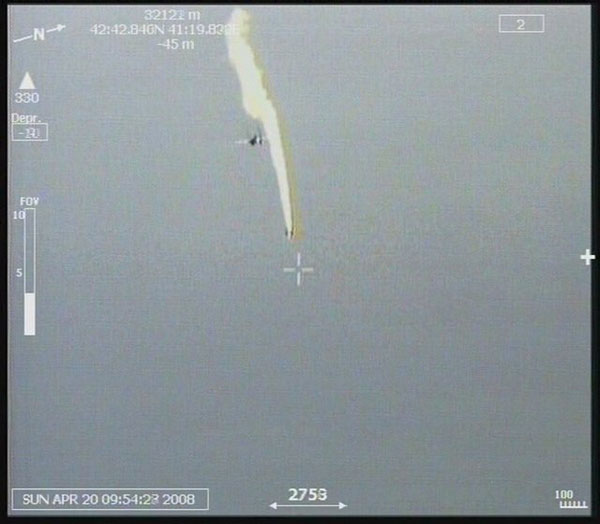 Second Georgian Hermes 450 UAV Shot Down by Russian Mig 29
Second Georgian Hermes 450 UAV Shot Down by Russian Mig 29 |
| |
| |
| |
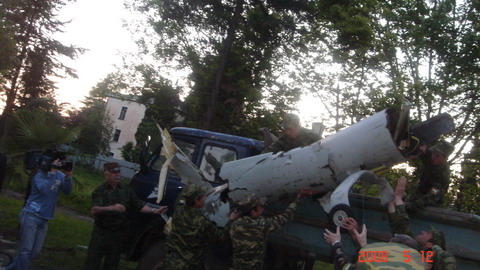
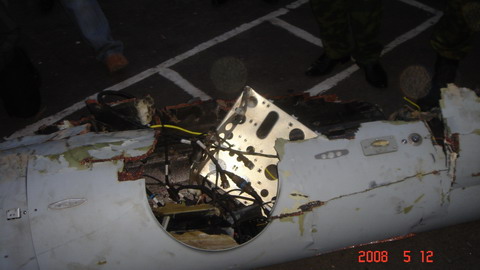
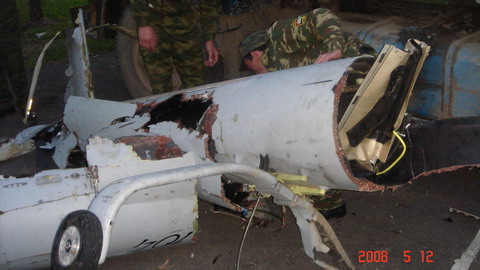
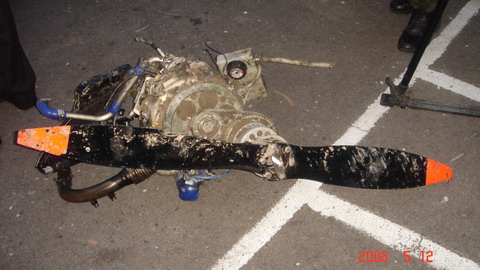
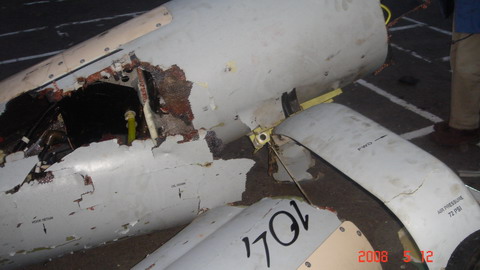
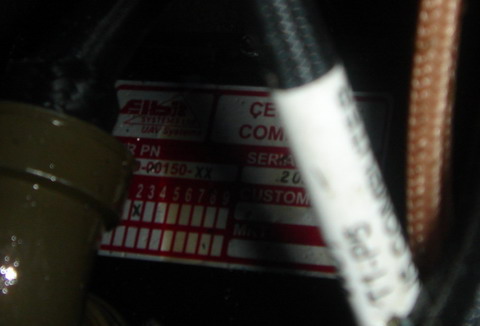 Parts of Georgian Hermes 450 UAV That Been Shot Down
Parts of Georgian Hermes 450 UAV That Been Shot Down |
| |
| |
| |
|
Ground Control Station
|
| |
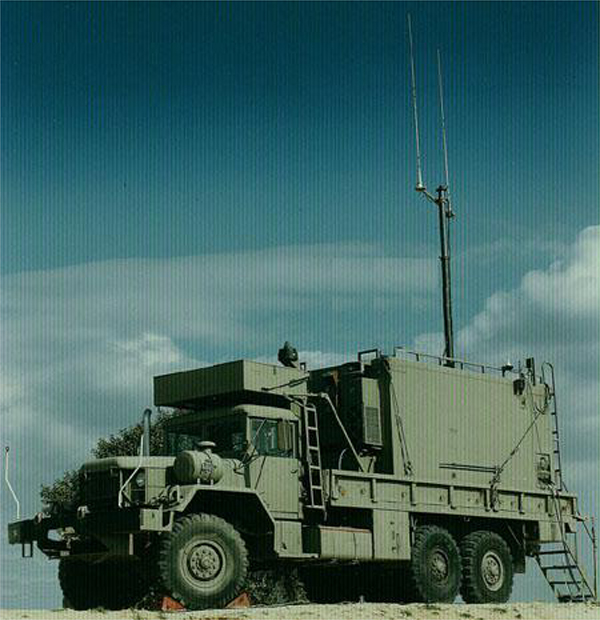
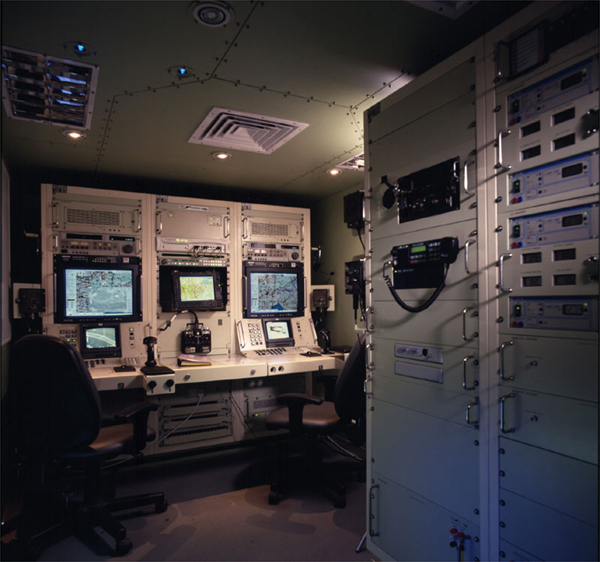
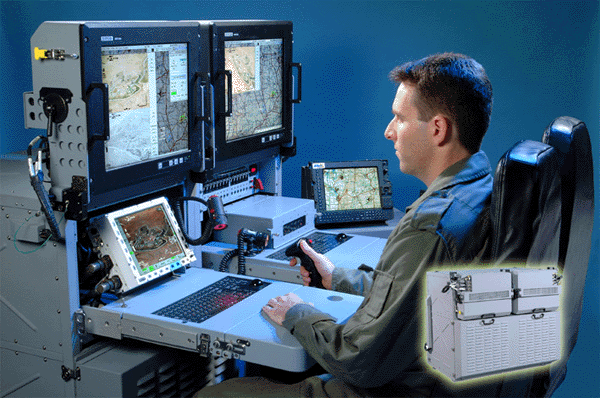
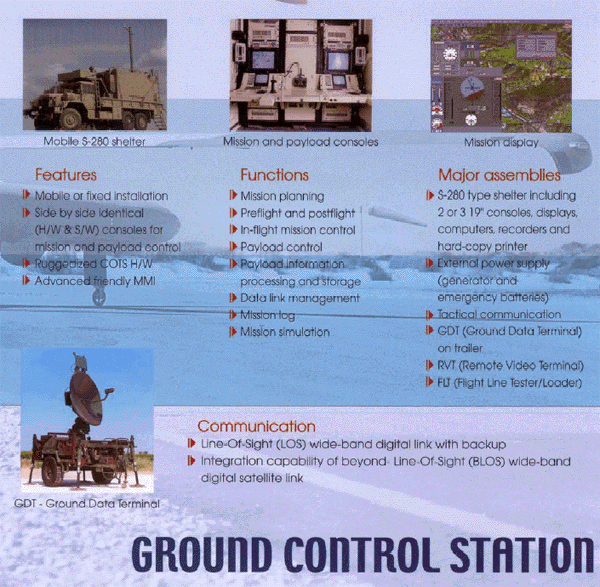
|
| |
| |
Main Features
- Mission planning, management & control
- Built-in data exploitation and dissemination
- Full mission debriefing & simulation
- Identical and redundant consoles
- Single operator, advanced HMI
- Ruggelized COTS H/W
- Commercial S/W tools
- Common GCS / DGCS (Down-sized GCS) to Hermes A/V family
- Interoperability - STANAG optional
- S-280 or downsize mobile station
|
| |
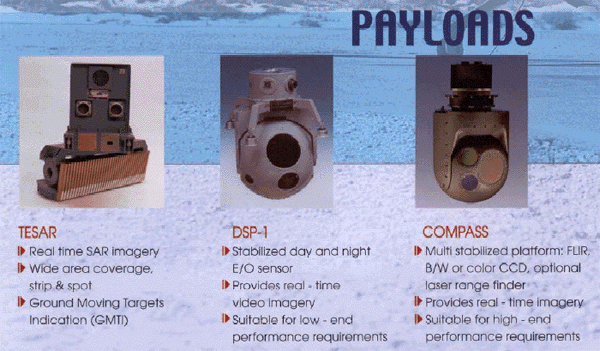
|
